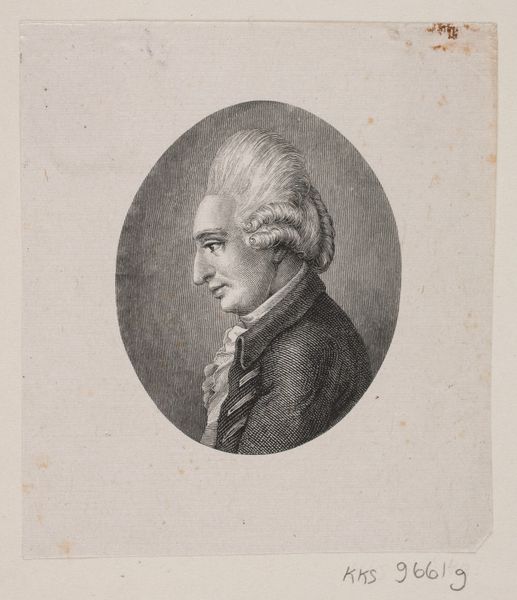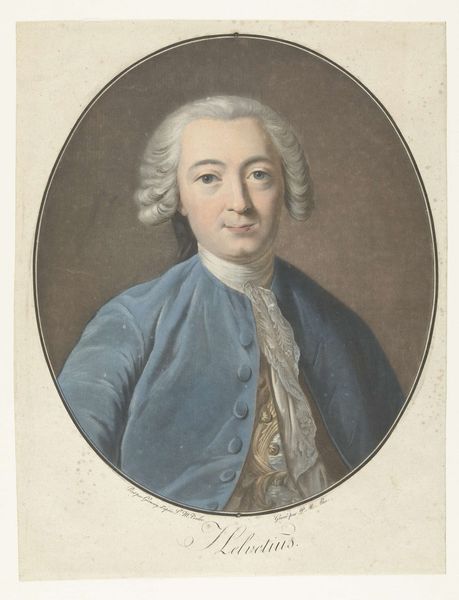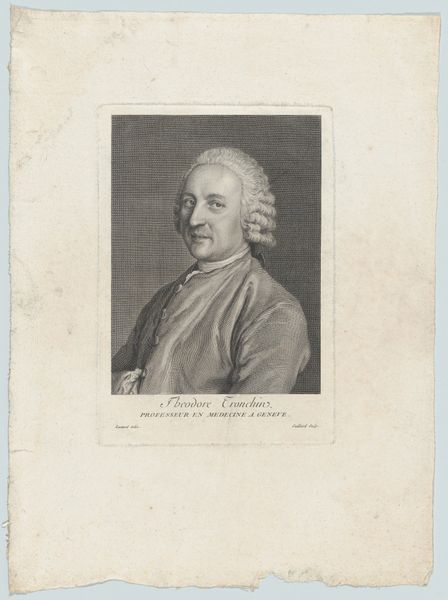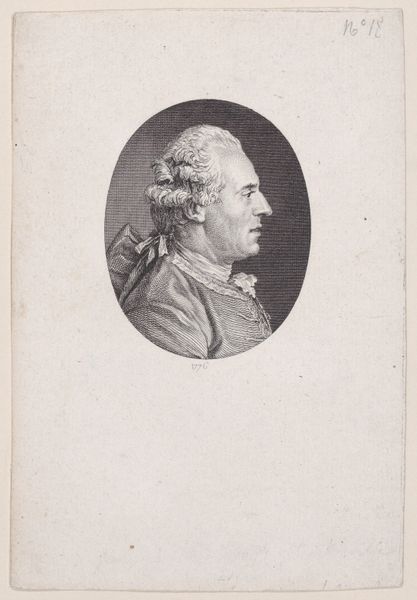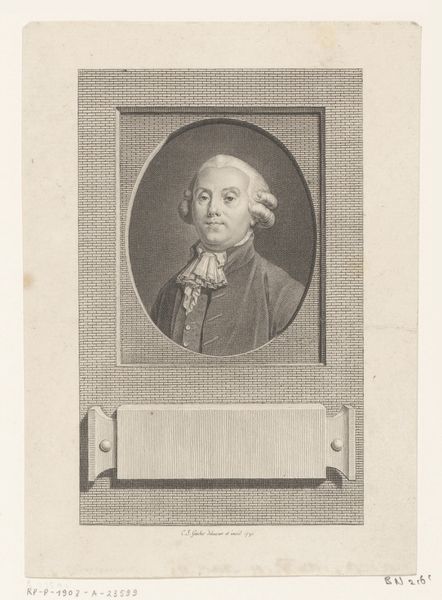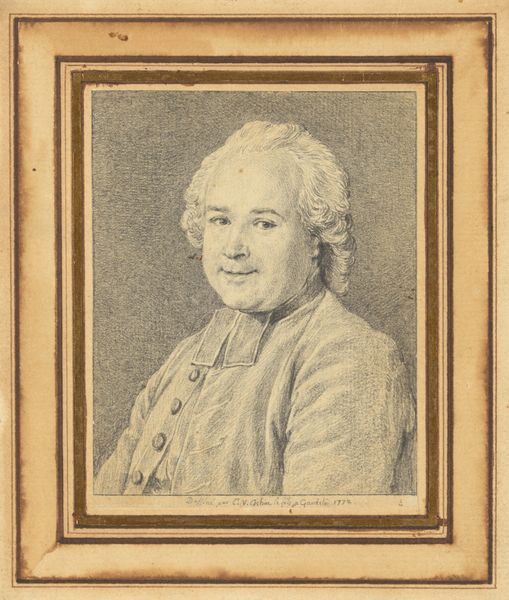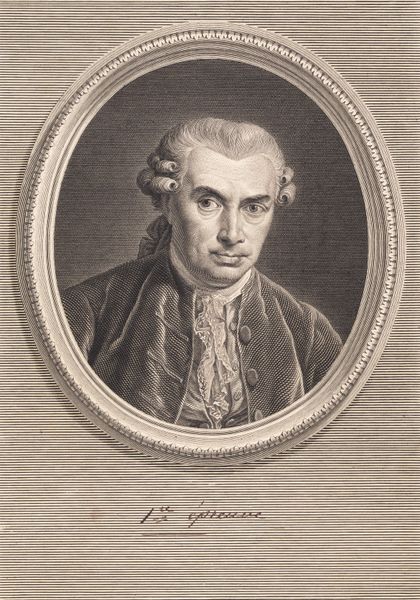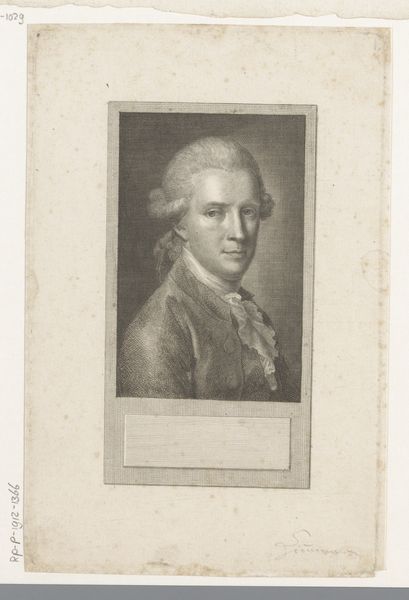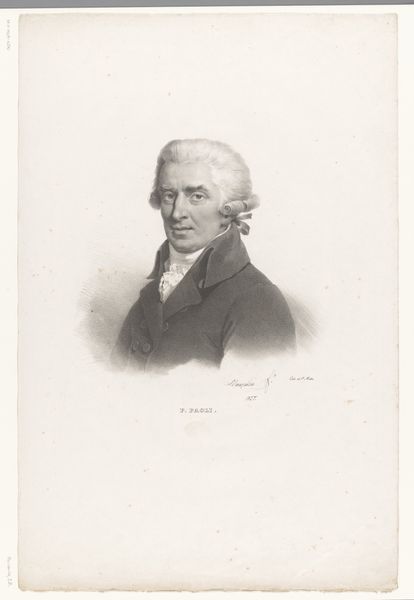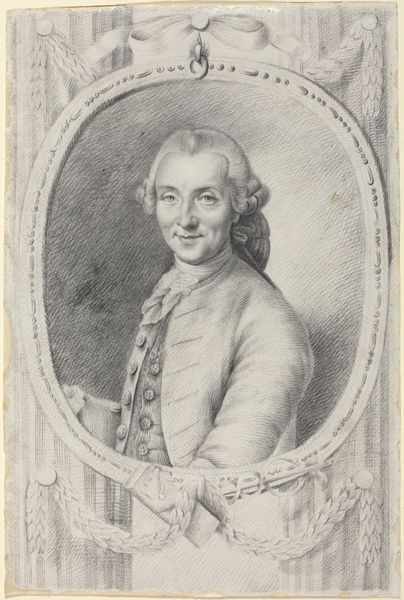
drawing, print
#
portrait
#
drawing
#
neoclacissism
# print
#
caricature
#
history-painting
#
realism
Dimensions: Sheet: 13 in. × 9 13/16 in. (33 × 25 cm)
Copyright: Public Domain
Editor: We’re looking at a print called “Jean-Jacques Rousseau,” made in 1791 by Pierre Michel Alix. The soft pastel colors give it a gentle, almost melancholic feel. What are your initial thoughts on its composition? Curator: The most immediate formal aspect is the tight circular framing. Observe how Alix uses this constraint to concentrate our focus. Notice, too, the limited color palette: the subtle gradations of grey, white, and just a touch of rose. What does this suggest to you about the artist's intention? Editor: I suppose it emphasizes the subject's intellect, perhaps his refined sensibilities, rather than any sort of bombastic revolutionary fervor we might associate with the period. But is this portrait a pure celebration or something more critical? Curator: Consider the meticulous detail in the rendering of the wig. Alix is interested in form. Each curl is carefully delineated, yet they contribute to the overall structure and movement within the circle. How might we read this emphasis? Does it humanize or satirize him? Editor: Perhaps it's both? The precision highlights Rousseau’s humanity, but also subtly pokes fun at the rigid conventions of the time. It captures an individual caught between worlds. Curator: Precisely. And consider the smoothness of the paper; in line with the formal clarity we expect from neoclassicism. Notice that Alix uses contour drawing to define Rousseau’s features without heavy shading. This aligns perfectly with prevailing attitudes about line, shape and formal composition. This artistic focus allows us to truly understand the work. Editor: I hadn’t considered how the very material could be a kind of commentary itself. It all really makes me think about the tension inherent in the art. Curator: Indeed, reflecting on its construction and how form mirrors intent helps us consider this complex portrait from many angles.
Comments
No comments
Be the first to comment and join the conversation on the ultimate creative platform.

